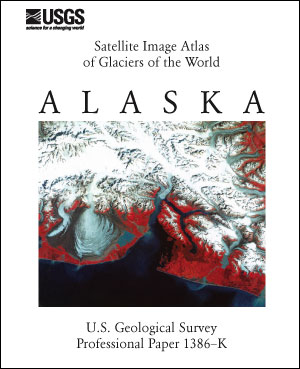Old Rocks
Diamond Member
We lost exactly where we expected to lose. Just as the GOP will lose the Senate in 2016. And it will be demographics and the very 'Conservative' stance by the GOP that will work for the Dems.
Follow along with the video below to see how to install our site as a web app on your home screen.

Note: This feature currently requires accessing the site using the built-in Safari browser.
oh, ok. So now you wanted to lose. LOLWe lost exactly where we expected to lose. Just as the GOP will lose the Senate in 2016. And it will be demographics and the very 'Conservative' stance by the GOP that will work for the Dems.
how is it we're celebrating by factually pointing it out? So you don't like facts? You call it celebrating. ah, yeah ok Frances.No, but we liberals are realists concerning what is possible. Not like the 'Conservatives' here that were celebrating their victory on 5Nov12. LOL






You mean that you are still celebrating your victory in the 2012 elections? I guess that is what is expected from you. LOLhow is it we're celebrating by factually pointing it out? So you don't like facts? You call it celebrating. ah, yeah ok Frances.No, but we liberals are realists concerning what is possible. Not like the 'Conservatives' here that were celebrating their victory on 5Nov12. LOL


 )
)






U.S. Geological Survey Professional Paper 1386-K
Glaciers of North America — GLACIERS OF ALASKA
By Bruce F. Molnia
With sections on COLUMBIA AND HUBBARD TIDEWATER GLACIERS
By ROBERT M. KRIMMEL
THE 1986 AND 2002 TEMPORARY CLOSURES OF RUSSELL FIORD BY THE HUBBARD GLACIER
By BRUCE F. MOLNIA, DENNIS C. TRABANT, ROD S. MARCH, and ROBERT M. KRIMMEL
GEOSPATIAL INVENTORY AND ANALYSIS OF GLACIERS: A CASE STUDY FOR THE EASTERN ALASKA RANGE
By WILLIAM F. MANLEY
Description
This chapter is the eighth chapter to be released in U.S. Geological Survey Professional Paper 1386, Satellite Image Atlas of Glaciers of the World, a series of 11 chapters. In each chapter, remotely sensed images, primarily from the Landsat 1, 2, and 3 series of spacecraft, are used to study the glacierized regions of our planet and to monitor glacier changes. Landsat images, acquired primarily during the middle to late 1970s, were used by an international team of glaciologists and other scientists to study various geographic regions or to discuss glaciological topics. In each geographic region, the present areal distribution of glaciers is compared, wherever possible, with historical information about their past extent. The atlas provides an accurate regional inventory of the areal extent of glacier ice on our planet during the 1970s as part of a growing international scientific effort to measure global environmental change on the Earth's surface. This chapter is divided into three parts: Part I, Background and History; Part II, Glaciological Topics; and Part III, Regional Distribution of Alaska Glaciers.
About 5 percent (about 75,000 km2) of Alaska is presently glacierized, including 11 mountain ranges, 1 large island, an island chain, and 1 archipelago. The total number of glaciers in Alaska is estimated at >100,000, including many active and former tidewater glaciers. Glaciers in every mountain range and island group are experiencing significant retreat, thinning, and (or) stagnation, especially those at lower elevations, a process that began by the middle of the 19th century. In southeastern Alaska and western Canada, 205 glaciers have a history of surging; in the same region, at least 53 present and 7 former large ice-dammed lakes have produced jökulhlaups (glacier-outburst floods). Ice-capped Alaska volcanoes also have the potential for jökulhlaups caused by subglacier volcanic and geothermal activity. Satellite remote sensing provides the only practical means of monitoring regional changes in glaciers in response to short-and long-term changes in the maritime and continental climates of Alaska. Geospatial analysis is used to define selected glaciological parameters in the eastern part of the Alaska Range.
Glaciers are rather important.
LOL.
What a bullshit site. Sorry, you stupid ass, but I have seen many of the glaciers in the Cascades and they are not advancing. Except for the glacier in the crater of St. Helens, they are either stagnating, or rapidly retreating. And Glacier National Park will soon have no glaciers.
Now you are claiming that the USGS is doing fraudulent science. You are one pathetic ass.
Glacier Monitoring Program - North Cascades National Park (U.S. National Park Service)
Glaciers are one of the most valuable resources in the North Cascades National Park Service Complex (NOCA). Approximately one-third of all the glaciers in the lower 48 states are within the park (Post et al. 1971). The 312 glaciers in NOCA are a vital component of hydrologic systems and aquatic ecosystems. They also influence soil development, the distribution of vegetation, flooding and are dramatic indicators of climate change. The glacial resource is also central to the region's hydroelectric industry and our efforts to sustain endangered salmon and trout. Perhaps the most critical role of glaciers is providing fresh water during the summer drought. This role is becoming more important as snow-pack and glaciers decline. Since the end of the Little Ice Age in the late 1800's, glaciers have retreated throughout NOCA and we estimate that approximately 40% of the park's ice cover was lost in the past 150 years (Figure 21). In the Thunder Creek watershed this has resulted in a 30% reduction in summer streamflow. To understand climate change, the glacier resource, and the effect of glaciers on other resources at NOCA, long-term monitoring of glaciers is needed. South Cascade Glacier, located just outside NOCA, has been monitored by the U.S.G.S. Water Resources Division since the mid-1950s. When we began this program in 1993 it was not known how representative South Cascade Glacier was of NOCA glaciers because of the influence of non-climatic factors such as geographic position, aspect and elevation. Since that time we have learned that each glacier in the North Cascades has a unique response to climate, but that all of the glaciers are retreating (Riedel and Larrabee 2011).
 I cant think of a nicer way to say Bull SHIT to your hype!
I cant think of a nicer way to say Bull SHIT to your hype!You do realize that you are lying once again, do you not?LOL.
What a bullshit site. Sorry, you stupid ass, but I have seen many of the glaciers in the Cascades and they are not advancing. Except for the glacier in the crater of St. Helens, they are either stagnating, or rapidly retreating. And Glacier National Park will soon have no glaciers.
Now you are claiming that the USGS is doing fraudulent science. You are one pathetic ass.
Glacier Monitoring Program - North Cascades National Park (U.S. National Park Service)
Glaciers are one of the most valuable resources in the North Cascades National Park Service Complex (NOCA). Approximately one-third of all the glaciers in the lower 48 states are within the park (Post et al. 1971). The 312 glaciers in NOCA are a vital component of hydrologic systems and aquatic ecosystems. They also influence soil development, the distribution of vegetation, flooding and are dramatic indicators of climate change. The glacial resource is also central to the region's hydroelectric industry and our efforts to sustain endangered salmon and trout. Perhaps the most critical role of glaciers is providing fresh water during the summer drought. This role is becoming more important as snow-pack and glaciers decline. Since the end of the Little Ice Age in the late 1800's, glaciers have retreated throughout NOCA and we estimate that approximately 40% of the park's ice cover was lost in the past 150 years (Figure 21). In the Thunder Creek watershed this has resulted in a 30% reduction in summer streamflow. To understand climate change, the glacier resource, and the effect of glaciers on other resources at NOCA, long-term monitoring of glaciers is needed. South Cascade Glacier, located just outside NOCA, has been monitored by the U.S.G.S. Water Resources Division since the mid-1950s. When we began this program in 1993 it was not known how representative South Cascade Glacier was of NOCA glaciers because of the influence of non-climatic factors such as geographic position, aspect and elevation. Since that time we have learned that each glacier in the North Cascades has a unique response to climate, but that all of the glaciers are retreating (Riedel and Larrabee 2011).
You do realize that Russia, China, India, Germany, Australia and Canada told Obama to go fuck himself dont you? they were slightly more polite than I am, as they refused to sign on to his butt load of crap, but the your #1 sign was clearly given...I cant think of a nicer way to say Bull SHIT to your hype!

link?Fail.........the AGW religion never talks about the GROWING glaciers in Greenland. duh...........but anyway, the religion has been talking about glaciers for 30 years.
Nobody is caring.
exactly, I'm not celebrating, sounds more like you're mourning. Pointing out a fact isn't celebrating, not sure where you get your information but you are lost on this. Not surprising at all though.You mean that you are still celebrating your victory in the 2012 elections? I guess that is what is expected from you. LOLhow is it we're celebrating by factually pointing it out? So you don't like facts? You call it celebrating. ah, yeah ok Frances.No, but we liberals are realists concerning what is possible. Not like the 'Conservatives' here that were celebrating their victory on 5Nov12. LOL
link?Fail.........the AGW religion never talks about the GROWING glaciers in Greenland. duh...........but anyway, the religion has been talking about glaciers for 30 years.
Nobody is caring.
 [/URL]
[/URL]